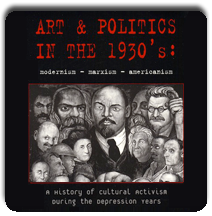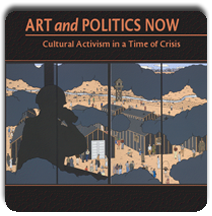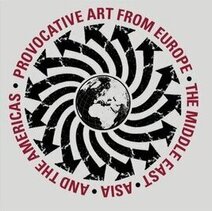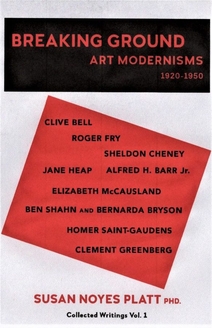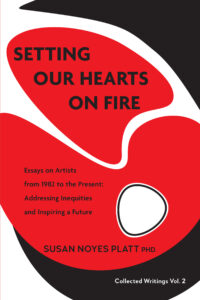Tomur Atagök: Painter, Historian, Critic, Curator, Mentor
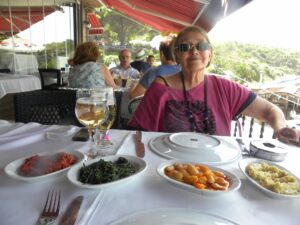
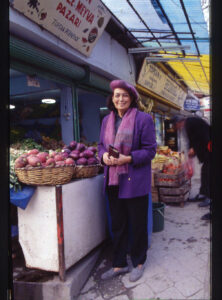
Tomur Atagök 1939-2025
We are all mourning the passing of our beloved mentor and teacher
I first connected with Tomur Atagök in 1997 through her collaborations with Katy Deepwell in n.paradoxa.
Tomur had just published in the first volume of Katy’s amazing magaine, an essay on “Contemporary Turkish Women Artists”. ( She went on to publish a second essay in n paradoxa in 2003, “Tomur Atagök in Conversation with Gulsun Karamustafa, Inci Eviner, and Nur Kocak Turkish women Artists and Feminism.”
When I told Katy I was going to Turkey for a trip in she gave me Tomur’s name and contact number. When we arrived at our hotel in Istanbul I called her and she immediately invited me over to her office!
Tomur suggested I apply for a Fulbright Fellowship and offered to be a sponsor. She had just been on a Fulbright in the US in 1996 so she knew the ropes. It had never occurred to me. So I went home and I did apply and I got it for 1999-2000 to teach American Art History at her university, Yildiz Technical University.
Right after we arrived there was a big earthquake! Since we had just arrived , we felt we couldn’t do much to help (although later I did teach a workshop with some children who had lost their homes)
We retreated to Lycia on the Southwest coast of Turkey for two weeks ( two fruitful weeks for my husband Henry Matthews who later wrote two books about the Greek ruins on that coast) Then we went back to Istanbul
Tomur settled us into a comfortable apartment in Tesvikye, an upscale neighborhood of Istanbul.
The big catch I discovered when I started was that her students did not understand English!. This was not the usual University that Fulbright sent scholars – Boğaziçi University- where English was the stamdard language of instruction
Well, I did have a translator at least.
I was mainly teaching twentieth century American art history, with an emphasis on post 1945. So Tomur began to take me to meet various contemporary artists in Istanbul. At that time in 1999-2000 there was no modern art museum although one of Tomur’s ongoing projects was promoting Turkish art both contemporary and historical.
That meant that I met the artists in their homes or studios if it was a different place ( rarely); almost all of the artists I met then were showing internationally in Europe. but were unknown in the US. Their work was completely different in media and topic than I had seen before, so it took me a while to write about them. I wrote a few short reviews and eventually a longer essay which was published in Frontiers magazine and is now included as the first chapter of my most recent book Around the World in 25 years, Provcative Art From Europe,thte Middle east, Asia and the Americas
All of these artists are now very well known, Gülsün Karamustafa, just was the artist in the Turkish Pavillion at the Venice Biennale

has been showing brilliant installations since the early 1990s
Her work in the 3rd Istanbul Biennial was censored

and Inci Eviner.who represented Turkey at the Venice Biennale in 2019.

During my year in Istanbul and after, Tomur and I collaborated on writing an essay for Third Text, “The Digestible Other” speaking about the history of the Istanbul Biennial and how artists “fit” into the international scene. Ironically Tomur herself was never included in a Biennial, she refused to be digestible. This,in spite of the fact that she created the seeds for the creation of the Istanbul Biennale
with earlier exhibitions, as we explained in the article.
We also wrote a review of a the 8th Istanbul Biennial “Poetic Justice ( these essays are also reprinted in my new book.) I also wrote short essays to introduce exhibtions she curated. My essay on the “Anatolian Goddess Series” appears in my last book, Setting Our Hearts on Fire
Tomur and I went to London to speak at an art historian’s conferance
and to Macedonia invited to participate in giving lectures by Suzana Milevska, curator.
Later, when I returned to Seattle, Wa, I also invited her to give a lecture at the University of Washington.
The last time I visited her was in 2015 when I stayed with her for several days after the Biennial. I wrote a blog post about the art in her home at that time. Here she is in 2015
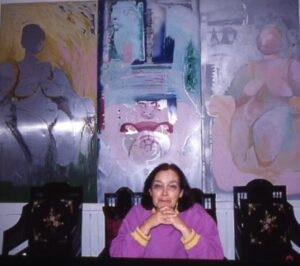
Here is an overview that I wrote a few years ago with additions.
Tomur Atagök,a leading feminist artist from Turkey, was born in Istanbul. After graduating from Robert College in Istanbul, she trained in the United States from 1960-1973, first at Oklahoma State University where she immersed herself in abstract painting and earned a BFA. She then went on to the California College of Arts and Crafts and the University of California, Berkeley for an MA. During her years in Berkeley, she experienced the Free Speech movement, then the civil rights uprisings, and third, protests by feminist artists .

After returning to Turkey in 1973, she pioneered, first of all as a painter, then as a teacher, curator, and historian. In the 1980s her painting focused on contemporary women, often painting on a metallic surface. Above you see one of her paintings featuring Madonna . The three graces appear on the right.
I remember seeing it in the hall of our department where we passed it everyday
Her work follows several intersecting themes although feminism is a central focus throughout her career. In her works of the 1980s, we see her assertion of the figurative in the midst of dynamic abstract expressionist brushstrokes. these dynamic paintings exude incredible energy of the brushstrokes and the figures.
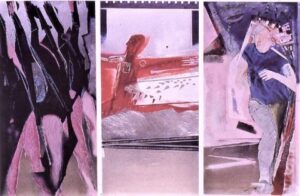
At this time she began to paint on metal.
She explains: “The pictorial reality and space on a metallic surface contains the hints the artist gets from the environment, the symbols and the descriptions she uses in making references to the outside world, the different realities of the materials and the techniques, the images reflected from the environment and the perceiver on the surface of the metallic work, and finally the interpretation of the perceiver each time create different subjective and materialistic realities of art.
On the other hand pictorial reality and real space, change physically with the reflections from the environment and the perceiver himself, and join with the physical environment and movement, creating a connection of life with art.”
In 1990 the critic William Zimmer asked about her frequent use of the color pink “It’s a color which she confided in me she cannot abide, but which also stands for humanity from a feminist perspective. Pink which traditionally connotes softness is applied to metal, meaning toughness.”
During these same years she was the Assistant Director of Mimar Sinan University Museum of Painting and Sculpture , where she also earned a Ph.D. in Museology. She then moved to Yildiz Technical University where she founded and chaired the first Museum Studies Program in Turkey in 1989. Atagok has trained many of the current museum professionals in Turkey.
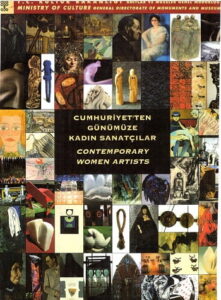

At the same time she began collaborating on ground breaking exhibitions of contemporary Turkish artists and historical studies
In honor of the 75th anniversary of the founding of the Turkish Republic in 1993, she co organized the first exhibition of the history of women artists in Turkey and Anadolu’da Yasamakta Olan Ilkel Comlekcilik |(Ancient Pottery-making Still Practiced in Anatolia) by Gungor Guner as well as “Contemporary Turkish Women Artists, organized by the Ministry of Culture, Istanbul Archaelogical Museum
Tomur had a Fulbright Fellowship at the American University in DC. in 1996 where she met some powerful feminist artists who suggested she look a the Anatolian goddess tradition. When she got back to Turkey she did just that. She took those small statues amd blew them up to an enormous size. Here is an installation of the entire series

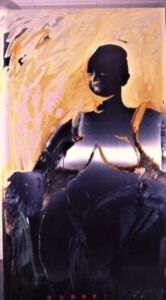
Dominating this series is the great Anatolian Mother Goddess from Çatalhöyük. That twenty centimeter statuette, excavated from the oldest city in the world, dates from around 5700 BC.
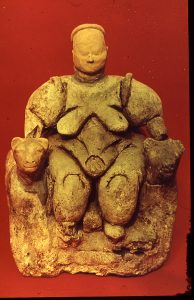
The small figure has enormous power: she is seated comfortably between subdued leopards as she gives birth. Her breasts, hips and buttocks swell to enormous proportions, further increasing her power. Far removed from the slender, even emaciated, ideal for a female body that is now common for some contemporary societies (notably the United States), this goddess proclaims her physical presence and her authority at the same time.

In the paintings the Goddess assumes much larger dimensions as she joins our world as a life size figure who stands as a guardian. Rather than a fertility symbol, she is now a symbol simply of the power of women. She is an affirmation of women’s energy and authority. On her head she wears a type of mechanical diadem/crown in one painting, and sits in front of a golden shower of sun in another. These two large goddesses frame a third panel that makes reference to the interior of woman, specifically here, the vertebrae and ovaries. The woman’s interior, so often altered today by contemporary medical science, is here protected by powerful traditional forces.
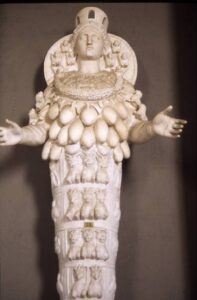

Another of these grand paintings is based on Artemis of Ephesus. Artemis, later changed to a slender virgin hunter by the Romans, is here seen in her guise as Cybele. Her many breasts carry the power of nurturing and life.
In place of the animals under her protection on the traditional statues, Tomur put guns tanks and other references to military warfare. Artemis also has black gloves and a contemporary face with bold red lipstick and blond hair. It was done in response to the violation of sacred lands by military weapons, particularly during the Gulf War. This powerful statement could be about any war and its destructive effect on life as a whole
The collective presence of these goddesses is a powerful commentary on contemporary women and their connection to historical traditions. Painted in a technique that has its roots in abstract expressionism, they are major examples of contemporary art in Turkey. She has created versions for hanging in shopping malls with a strong
statement against war written o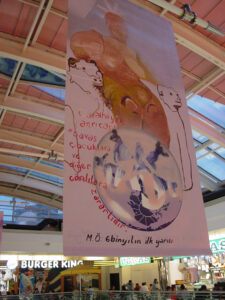 n the back
n the back

Say no to war

Games, Toys, Childrean, War, Love 1999- 2000
dedicated to Uğur Mumcu

One of her most famous seriers is an homage to Uğur Mumcu an investigative journalist researching terrorism in Turkey who was murdered in 1993. In her homage Tomur wrote on the painting in Turkish a quote from the journalist:
Translated into English it said:
There are those who have preferred a lifestyle of silence
pulling inward as a personal symbol.
Their freedom and weapons do not speak
Every injustice takes strength in a way from their passivity.


A complete heart in another offers a brighter tone.
The heart is only partially visible as a double or single curve in some works.

Against that motif emerge silhouettes of guns, toy soldiers, bones, paper doll cutouts, hands, dots, crosses, and crescents. In addition the artist uses stones, sticks, feathers, and glossy advertising images of beautiful people. Scattered throughout many of the works are poetic phrases, of various moods, hopeful, sad, cynical.
The theme is a belieft in humanity’s ability to survive though poetry and creativity in spite of the many ways leading to war. She saw the children’s toys coming from cereal boxes turned into violence and yet she aso saw love.
The series as a whole is an homage to Mumcu, but also a response to him. Atagök has decided not to remain passively silent in the face of her own distress at his death and her support for his ideas.
Doğanin çağrısı Nature’s Call
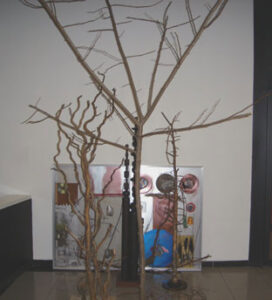


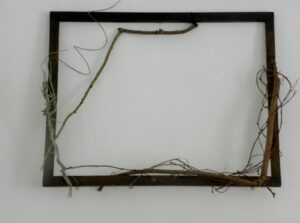

Another theme that intersects with both politics and women is nature. It takes many forms. Her home is filled with examples of recreating nature in the midst of her life–she even created a forest in her basement and had an exhibition in 2011 that featured an installation of branches, paintings, diaries and other pieces.
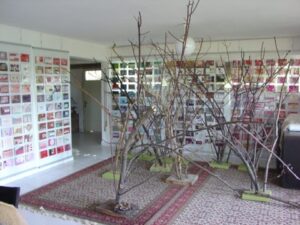
Her commitment to calling attention to the small details of branches or bones and repositioning them on the surface of her painting results in a subtle relationship between abstraction and realism. In other works she takes random trash found in the woods and creates constructions. When asked what is most important to her at this time in her life (she turned 82 in May), she answered her nature installations.

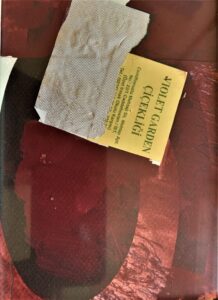
In addition to all of these major works, Tomur has made hundreds of small works, part of her ongoing Diaries. Each one is composed of a the detritus of everyday life, a candy wrapper, a ticket to an exhibition framed in a small format with her signature expressionist gestures added. These small diaries tell the story of her life in collage. They have been exhibited on their own and in connection with larger works (such as perched on top of the goddess series). They tell us as much about who this prolific artist is, as do the large scale works.
Here is one diary postcard:
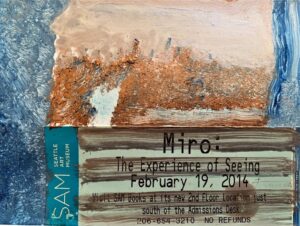
A Miro exhibition we went to when she came to US in 2014
As the Elgiz Museum described the Diaries in 2006 :
“a collage of over 1000 post card sized mixed media works produced between 1990 and 2006. Journeys through France, Germany, Italy, USA, UK, Macedonia, Greece, Azerbaijan, South Korea, Yugoslavia and Turkey represent the subjects for the artist’s reflection; instead of following the conventional literary format of a diary where passages are added simultaneously with the event, Atagok chooses to reflect on each event after a period of time has passed; this allows her to effectively fuse the past with the present. She chooses not to focus on isolated moments but on a collection of memories illustrated through everyday items such as tickets, wrappings and photos.
‘The Diaries’ do not function as a commentary on life but is intended as an accumulation of recycled materials intercepted by art. These works are personal, informal and social
Tomur Atagok as an artist, a feminist, a pioneering writer and historian of art by women in Turkey, an educator of museum professionals, an activist. Yet all of these identities still do not fully encompass her accomplishments. She is above all a deeply feeling human being who when asked about her dream project stated: “ I would like to work more on human equality with man and woman . . . We are all equal!”
How much we will miss her!

At the time of my visit during 15th Istanbul Biennial. ( I still have that hat)

This entry was posted on March 31, 2025 and is filed under Art and Activism, Contemporary Art, ecology, Feminism, landscape, Uncategorized.


